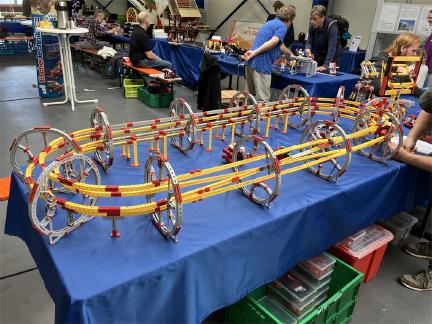Du baust gerne mit fischertechnik? Hier gibt es für dich ….
- eine Bildersammlung (schau dir Fotos anderer fischertechnik-Freunde an und nutze sie als Vorbild für eigene Modelle)
- einen Servicebereich (lade Bauanleitungen und andere Dokumente herunter)
- ein Forum (tritt in Kontakt mit Gleichgesinnten)
- die kostenlose Zeitschrift ft:pedia (mit Artikeln und Modellvorstellungen)
- Veranstaltungen, bei denen du vor Ort erlebst, was mit fischertechnik alles möglich ist.
Weitere aktuelle Infos dazu auch im Forum.
-
- September 2025: ftc-Convention 2025 in der Martinskirche Bad Hersfeld
-
- eine Teile-Datenbank (nutze die umfangreichen Informationen über aktuelle oder frühere Bauteile und Baukästen sowie Bauanleitungen und andere Dokumente)
Von unserer letzten Veranstaltung


Neu im Bilderpool


Aus unserem Bilderpool


Aus unserem Bilderpool


